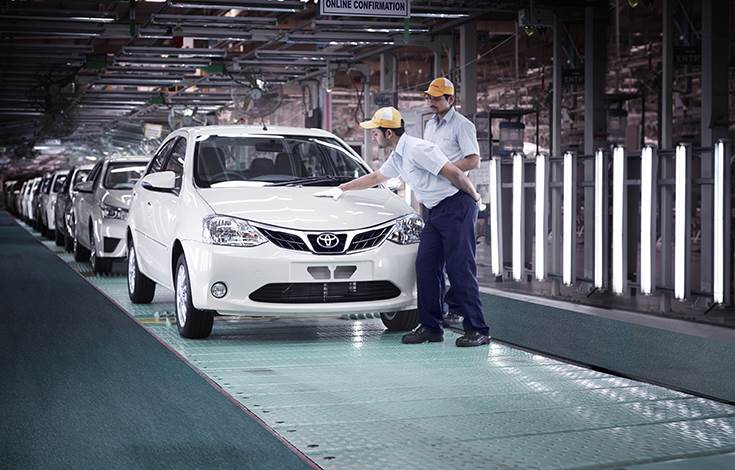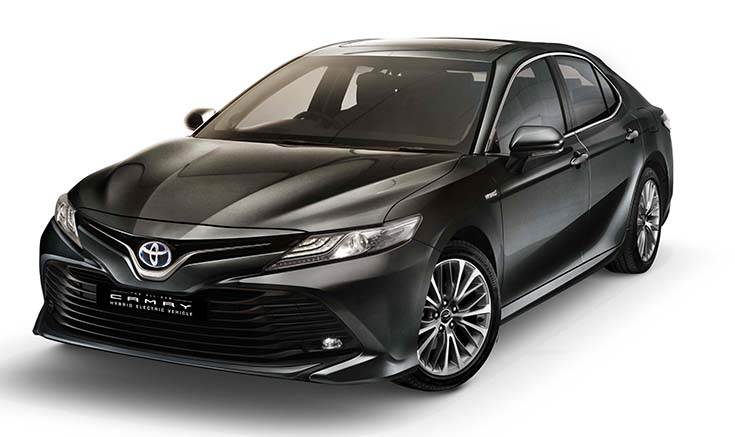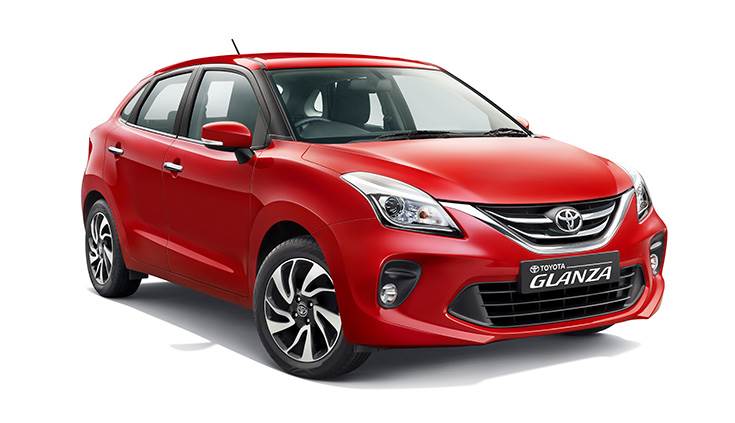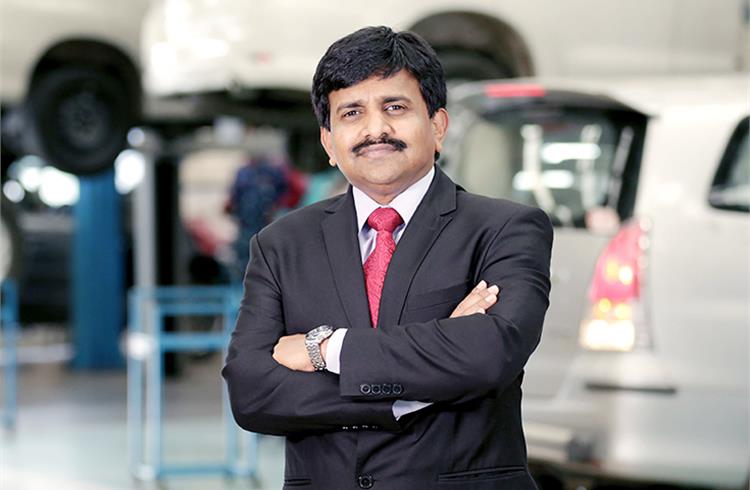Toyota Kirloskar Motor's N Raja: ‘India should be technology agnostic as long as its pollution reduction goals are met.'
The world's second-largest automaker has completed 20 years in India, which it has learnt is not the easiest of markets. How does Toyota, with its sharp focus on safety and technology, plan to achieve firmer footing? Toyota Kirloskar Motor's Deputy Managing Director N Raja speaks to Kiran Bajad.
The world's second-largest automaker has completed 20 years in India, which it has learnt is not the easiest of markets. How does Toyota, with its sharp focus on safety and technology, plan to achieve firmer footing, why does it believe hybrids can drive eco gains and what is its new product strategy in alliance with Suzuki? Toyota Kirloskar Motor's Deputy Managing Director N Raja speaks to Kiran Bajad.
Let's start with India Auto Inc's challenging market situation, with month-on-month sales declines. Will BS VI pre-buying later in the year make up for this downturn or will the market remain subdued for long?
We have been wrong in predicting the month-on-month sales over the past few months as it continues to decline. The slowdown really started in the second half of 2018. For Toyota Kirloskar Motor (TKM), the floods in Kerala last year were the first bad news and sales for the full Onam festival suffered badly.
This was followed by the lukewarm festive season, then an uptick in December as customers, having delayed purchases, bought cars. But after January 2019, the slowdown continues. Between January-June 2019, the industry is down by about 12 percent. If it is to catch up, it must grow in double digits but our estimates suggest calendar year 2019 could be 10 percent down.

Similarly, in FY2019-20, the Q1 fall has been sharper with an overall 18 percent drop. In terms of share of volumes, last year the total industry volume was 3.2 million cars; in the first three months of this fiscal alone compared to April-June 2018, total car sales have dropped by 175,000 units and every month sales are 60,000 units down.
We will have to see the trend for the next nine months. If sales catch up, then as SIAM says, the industry will record a growth of about 3-4 percent but it looks quite difficult.
What, in your opinion, are the key factors playing sales speed breakers in the domestic market?
There are several reasons. It all started off with the IL&FS default, which may be nothing connected with the auto sector but it has tightened a lot of NBFC financing. Also, the RBI rate changes have not really helped industry. Secondly, feedback from banks suggests that household saving rates of 24-25 percent have come down to 15-16 percent over the past few years. The cheap money available for banks in the form of deposits has gone down, which is now influencing their lending for the end-consumer.
As the saving habits of Indians are changing, more money is finding its way into mutual funds and thereby impacting the financial market. Also, the system has become quite tightened since demonetisation, with more formalisation of the economy. For example, our premium customers who buy the Fortuner in Tier I and 2 towns are rich people but they don’t have income tax returns and hence banks don’t lend them money. Overall, therefore, finance which earlier used to get approved in 7-8 days is now getting dragged to 20 days and more. This cycle is delaying purchase decisions.
Toyota Kirloskar Motor has completed two decades in India. What have been the highlights?
This 20-year journey has been rewarding in that we have been able to achieve a lot of things in the Indian market. We had to bring the Toyota brand image to India, and show customers the real experience of quality, durability and reliability (QDR). In terms of our product strategy, since the very beginning, we have been playing the niche markets as per our original plan. We have been able to establish our products, have built QDR, and customers have accepted that this approach is our biggest success.

The real asset for us in the past two decades has been our family of over a million customers. For example, when we launched the Innova Crysta in May 2016, in the first three months over 60 percent of sales comprised existing Toyota customers. There are brands which are selling cars by the million but I don’t think anybody has this kind of brand pull. This has been built over the past 20 years, and that doesn’t come in a year or two.
Also, we stopped making products when the customers were asking us why? Even today, taking South India as a base, owners bring their Qualis to workshops paying over Rs 300,000 to refurbish or repaint it, refusing to let go of the car. Customers who bought the Qualis for Rs 500,000 then now get Rs 400,000 to Rs 500,000 in resale value after all these years! It's this kind of customer commitment that we have been able to nurture and build over these 20 years.
How do you foresee the near-term future for TKM in India?
Going ahead, we want to be a part of the solution for everything — be it the clean environment or resolving the energy issue by trying to address it in our own way. That is why we have brought our self-charging hybrid vehicle (Camry Hybrid) and we are also looking at futuristic products such as fuel cells and electric vehicles. Today, we have just five percent of the Indian passenger vehicle market as we don’t play in the volume game.
Two things are closer to our heart: safety and technology. We have worked extremely hard at safety leadership in India. We introduced the first dual airbag as standard on the Etios as early as 2016. Similarly, we brought the knee airbag and then seven airbags with the Yaris as standard fitment in India. On the technology front, we were the first local manufacturer to bring a hybrid solution to India in the form of the Camry Hybrid.
The biggest learning, which continues in our journey ahead, is our Etios. Following customer feedback, there are a number of areas which have room for improvement. We have learned from our customers, particularly millennials, that apart from a well built and safe car, looks and superior product feel are also important for the customer. Speaking of product strategy, TKM has always chosen niche categories.
Going forward, would you look to enter other growing segments to get a bigger slice of the volumes rather than remaining a niche player?
Business strategies continue to change with the needs of the market. For example, five years ago, we wouldn’t have anticipated the demand for SUVs in India. These kinds of changes happen in every market, which means we have to keep updating regularly.
To keep up with these changes, teams from our parent company visit India often to study market trends. Going into the future, there are two clear strategies we are working on — firstly, the alliance project and secondly, our own product portfolio. Our aim is to never let go of our 2 million customers, keep looking at their needs, and offer them upgrades to make them stay in the Toyota family. Secondly, in the above-Rs 10 lakh segment, we clearly see that our products need to offer more options. We also have 500,000-odd Etios customers Is
Is TKM planning a sharper focus on the SUV segment in the near term?
Yes. The shift in the market from the traditional sedan to SUVs is something we need to look at.— how do we enable them to upgrade to a Yaris or Corolla is what we are working on.
Toyota has always endorsed hybrids as the most suitable solution for India but the government's focus is clearly on EVs. How do you view this and what is the best way forward?
Frankly, we have always been vouching for technology and movement towards EVs. Toyota Motor Corporation globally is working towards zero fossil fuels by 2050 as a major policy. That is the way forward and we acknowledge it by working towards that direction.
 What we are trying to say is that in the current ecosystem, for India, with its infrastructural challenges, the path for EVs moves through hybrids. For example, our Camry Hybrid meets BS VI emission levels and fuel efficiency is 40-45 percent better. So hybrid is a gradual shift. Nowhere are we saying EVs are not suitable. In fact, globally, we are working on EVs as a technology. But in India, EV pricing and charging infrastructure remain a key challenge.
What we are trying to say is that in the current ecosystem, for India, with its infrastructural challenges, the path for EVs moves through hybrids. For example, our Camry Hybrid meets BS VI emission levels and fuel efficiency is 40-45 percent better. So hybrid is a gradual shift. Nowhere are we saying EVs are not suitable. In fact, globally, we are working on EVs as a technology. But in India, EV pricing and charging infrastructure remain a key challenge.
What we are saying is to stay technology agnostic as long as the final result of environment protection and reduction in pollution is met. The moment infrastructure is available in the country, we will start to move in. Today, we are BS VI-ready, hybrid as a technology is available with us, we are trying to bring in the plug-in hybrid, and our work on EVs is also underway. What's more, we also have fuel cells and hydrogen cars with us. In fact, Toyota is one of the few automakers which has commercialized hydrogen cars, which are now available in Japan, the USA and Dubai. We are trying to bring a car as a pilot in India. Therefore, as far as technologies are concerned, we have all of them available with us.
How prepared is TKM for BS VI vehicle rollout, which is now less than nine months away?
We are totally prepared to rollout BS VI vehicles, latest by January or February 2020 depending upon the fuel availability. The Courts clearly disallowing sales of BS IV vehicles after March 31, 2020 helped us prepare better. We are very clear on the rollout process in the BS VI transition by planning every aspect of the business. By March 31, 2020, we will sell all our BS IV cars because TKM dealers are never overstocked.
At present, the Innova Crysta and Etios are the major products for TKM in India. Will these two remain the mainstay for TKM and what is the trend in buying patterns for these two cars?
Yes, these two products will remain our major growth drivers but we will look at other products too. With the Innova Crysta, we have a 45 percent market share in the segment with a clear leadership; similarly, we are the leader in the Corolla, Camry and Fortuner segments. With the Innova Crysta, one major trend is the higher preference for automatic transmission (AT) with nearly 40 percent share of automatics. This is akin to what has happened in the developed markets, where automatic transmission has become a standard offering. India will see a complete shift towards automatic transmissions in the next 10-15 years, just like what happened with AC and power steering.
 The Glanza, the first product from the Toyota- Suzuki alliance, is out. What's next and when?
The Glanza, the first product from the Toyota- Suzuki alliance, is out. What's next and when?
This discussion is largely done at the parent company level between Toyota Motor Corporation and Suzuki Motor Corporation. This is not a discussion that happens between the Indian subsidiaries.
The roadmap is clear — we have launched the Glanza, next in line will be the Brezza, followed by the Ciaz and Ertiga but no timeline has been discussed on these two.
What is the initial customer reaction to this rebadged hatchback?
We have already talked about the alliance. It is more of a professional understanding with TMC providing technologies, and we learning from SMC on manufacturing, cost efficiency, purchase and vendors. It is a mutually symbiotic success story.
We respect them as a senior partner and there's a lot to learn from them. The Glanza was launched only recently, so we are not looking at numbers as yet. The market response is quite positive and customers are appreciating the overall package we are offering, right from the three-year warranty for 100,000km and roadside assistance through to special finance packages. Overall, customer feeling is good along with the promise of welcoming new customers to the Toyota world for the reliable service.
There was a misconception in the market that we will be costly, but we are not. Even on the service front, we will try to give more value to our customers. What we have seen is that nearly 50 percent customers coming in (for the Glanza) are new to the Toyota world — this is a real win-win situation for us. This is a premium hatchback where the metro city demand is around 65 percent and the remaining is from Tier I and 2 towns. We are offering the Toyota edge. What is it? Once a customer comes to us and his/her profile matches, we will give 100 percent finance, plus roadtax, three-year insurance plus service package and an extended warranty covering up to five years. We fund all this for our customer. For example, if the vehicle cost is Rs 800,000, it will cost Rs 900,000 including all the features. We will fund 100 percent with a 4- to 5-year finance tenure. Such types of flexible schemes are not available in India today.
The market is abuzz about the lack of product differentiation between the Glanza and Baleno? How is TKM trying to attract buyers?
Frankly, Maruti-Suzuki Nexa is healthy competition for TKM. We will fight with Nexa and this healthy competition will continue. We don’t talk bad about them. We talk about our strengths including three years of ease of mind and the five-year scheme. The cost of ownership won’t be dramatically different and we have express maintenance of 60 minutes, which is not available in the market, and where we have the expertise. When a customer visits a TKM showroom, we share the service experience. These are the things which we do differently.
How will both carmakers report sales and production of the Glanza and the Baleno?
For SIAM's monthly database, the manufacturing would be reported by Suzuki Ahmedabad. The wholesales are reported by TKM, thus ensuring there isn’t any duplication in the numbers.
TKM’s driver training institutes have completed 12 years in India. Can you elaborate on this initiative for drivers as part of the company's CSR activity?
We have a lot of CSR-focus activities around drivers in India. We do it at airports in Mumbai and Bangalore and have found that a large number of them are unaware that they have an eyesight problem, and nearly 30-40 percent of them are diabetic. In fact, there were a couple of cases who were on the brink of a heart attack and we immediately sent them for a check-up.
With our Toyota Safety Education Programs (TSEP) conducted for school children, we have covered 35 lakh cumulative education profiles till date. We donate safety parks to schools, have fitted RO (reverse osmosis) plants in the villages located near and around our plants, and also provided toilets for girl children in schools. In India, plenty of driving schools are available and they essentially help learners go to an RTO and get the license. Our approach is completely different — the focus is on a lot of skilling and awareness.
We conduct classes and install a driving app in the car, which gives various scenarios of driving, and this helps train learners properly. With the brand pull and awareness, we are witnessing a lot of female candidates coming forward to learn driving.
Lastly, can you list a few challenges in the India journey and how do you plan to overcome them in the future?
We face challenges almost every day. For example, a lot of dealers are exiting the business. We are working on an important aspect around the dealership business as a challenge and the corrective action is a dealer succession plan. None of the vehicle manufacturers today are looking at their dealers and what happens to them.
In the Toyota system, we look at a dealer-principal — if he touches 60 years of age, then we want a succession plan in his family by nominating a member of the family, who would run the business. This is not about profit sharing but about dealership operations. In a family controlled businesses, we have to develop this transition. After someone has turned 55 years old, we introduce the next in command, then hand-hold him and develop that new person through Toyota systems.
This is extremely important for the viability of a dealership. In the recent past, we had an issue with one of our major dealers in Pune. He was a well-known dealer for us for a long time. It was only due to his other business that our dealership business suffered, and it took us nearly three years to get things back into order. So, the challenge for the future is developing dealerships with professional management
RELATED ARTICLES
BRANDED CONTENT: 'We aspire to be among the leading sensors and electro-mechanical products manufacturer'
P. Parthasarathy, Founder & Managing Director, Rotary Electronics Pvt Ltd shares the company's commitment and vision to ...
‘Big opportunity for startups lies in products in India’: Detlev Reicheneder
As electrification levels the playing field, the focus on tech and R&D to bring innovative products is the mantra for st...
'I hope my journey makes people say — I can do this too'
Ranjita Ravi, Co-founder of Orxa Energies — the maker of Mantis e-bikes — shares the challenges of building a startup an...





 02 Sep 2019
02 Sep 2019
 27753 Views
27753 Views






 Autocar Pro News Desk
Autocar Pro News Desk




